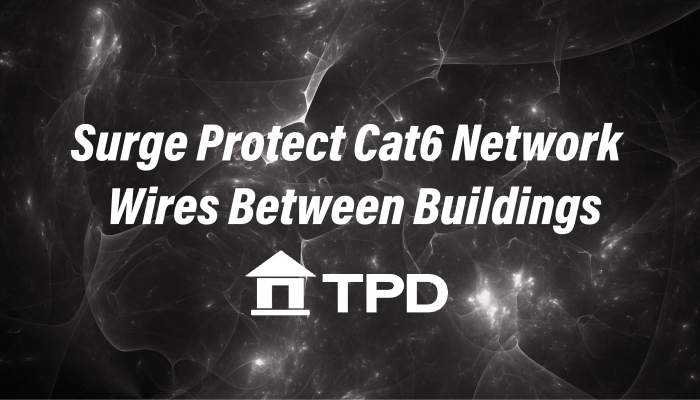Surge Protect Cat6 Network Wires on Both Ends Between Buildings
A critical detail in many installations is ensuring proper protection for network wires that run between buildings. Whether you're installing camera systems or networks, if those wires go outside or cross from one structure to another, they create an easy pathway for dangerous transients and surges. This will likely lead to problems down the road. Future electrical codes are likely to mandate protection for these pathways, and forward-thinking integrators can stay ahead of the curve by protecting them today.
Surge protection should be properly installed and bonded to ground on both ends of the network wires to protect against differences in ground potential. This is extremely important! When lightning strikes near one building, the ground voltage can rise drastically in that location. That voltage seeks to balance itself out, which often means traveling through the network wire connecting the two structures into the equipment in the other building. This can cause severe damage to sensitive electronics on both sides of the connection.
The simple solution for network and POE camera wires:
- Install a TPD-CAT6 surge protector where the network wire leaves the first building.
- Install a second TPD-CAT6 surge protector where the network wire enters the next building.
This “both ends” approach ensures that each structure maintains its own grounding reference, prevents damaging surges from traveling over network lines, and protects valuable equipment and infrastructure.
Too often, surge protection is overlooked, leaving your clients’ investments vulnerable. This is one of the most beneficial and affordable upgrades any integrator can offer. It demonstrates to your clients that you’re thinking ahead about risk mitigation, loss prevention, and system reliability. Learn more about protecting network cables between buildings here: Network & IP Camera Surge Protection, and feel free to contact us with any questions!


